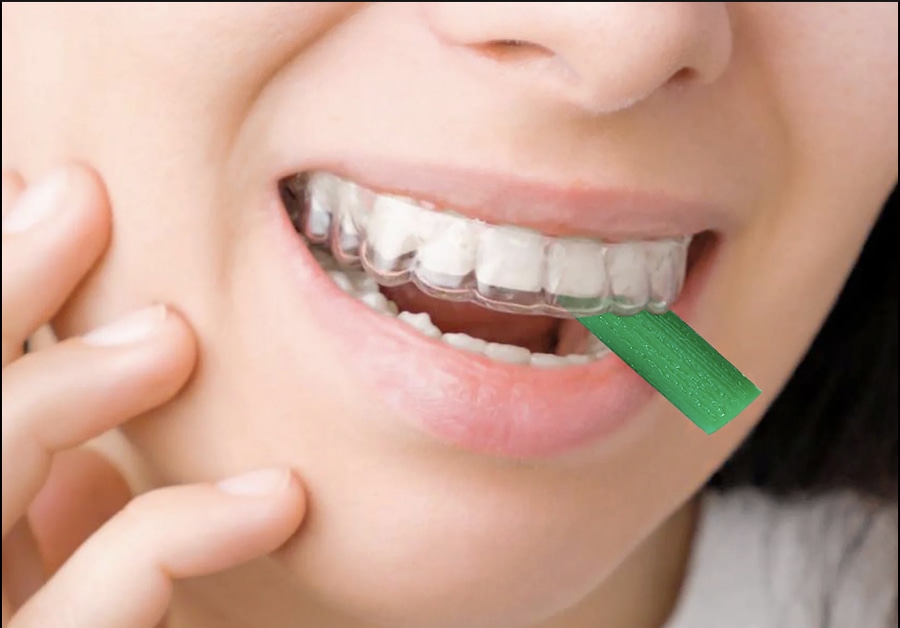
#Industry News
Causes and Solutions for the Misfit of the Attachment Template or the First Set of Aligners
Clinical Operation
I. Production Principles
The attachment template is produced based on the pre-correction impression data of a patient, used for placing attachments. To facilitate clinical operations and restore the attachments’ shape, a thinner dental material is selected, with a formed thickness ranging between 0.2 to 0.4 millimeters, which ensures strong adaptability. Thus, a well-fitting template doesn’t serve as a basis for the precision of impression data and the production restoration; it can fit even with minimal errors in PVS models, intraoral scanning, or production accuracy.
The first set of aligners are produced to replicate the target dental positions after the initial correction. These aligners, not crafted for perfect fit, are considerably harder than attachment templates with a formed thickness of 0.3 to 0.6 millimeters. They require superior precision in impression-taking, dental arch consistency during treatment, and production accuracy. Consequently, their adaptability is less than that of attachment templates and is intertwined with clinical attachment placement.
II. Proper Clinical Operations
The standard procedure in invisible orthodontic diagnosis and treatment involves having patients try on both the attachment template and the first set of aligners, which helps avoid numerous subsequent issues. Directly placing attachments without trying on the aligners, if the aligners don’t fit, it can be difficult to determine whether the misfit is caused by attachments placing or not.
Typically, the aligner is inserted simultaneously from both sides of the anterior towards the posterior. In cases where one posterior side has severe crowding while the other is relatively aligned, prioritize inserting the aligner on the more crowded side.
III. Causes, and Solutions for Aligners’ Misfit
1. Aligners’ misfit with the incisal edge
Cause: After adding power ridges, the aligner retains vertical force to teeth, commonly observed in cases requiring anterior tooth retraction.
Solution:
a) Normal attachment placement, no special treatment required.
b) If the misfit doesn’t get worse with aligner wearing, advise the patient to use chewies and wear the aligners normally.
2. Slight curl-up at the posterior of the aligner
Cause: During molar distalization, the aligner might be designed to extend slightly beyond the tooth arch, which can cause minor curl-up at the free-end. Or intruding and extruding molars could result in aligner’s free-end curl-ups or occlusal surface misfits as the aligner is designed higher or lower than the actual tooth.
Solution:
a) Normal attachment placement, no special treatment required.
b) If the misfit doesn’t get worse with aligner wearing, advise the patient to use chewies more frequently and keep wearing aligners normally. The doctor should monitor the teeth’s movement and the treatment efficacy during clinical follow-ups.
3. Significant Gap on the Occlusal Surface or Free End Suspension at the Posterior
Cause: In normal situations, this happens when there’s either incomplete insertion of the aligner or space reserved for tooth eruption. But if the aforementioned doesn’t apply, it’s likely due to precision errors in the PVS impression or intraoral scanning, which is regarded as an abnormal situation.
Solution:
a) In normal situations, if unable to fully insert or if the aligner pops back after insertion, consider adding attachments to help fix the aligner and using chewies.
b) In other abnormal cases, a refinement is necessary.
4. Inability to fit the attachment template or the first set of aligners with proper insertion procedures
Cause: Likely due to precision errors in the PVS impression or intraoral scanning.
Solution:
a) Retake the intraoral scan or PVS impression model.
b) Submit a quality analysis; the analysis can provide overlapping comparisons of the previous and current tooth data for assessment.






